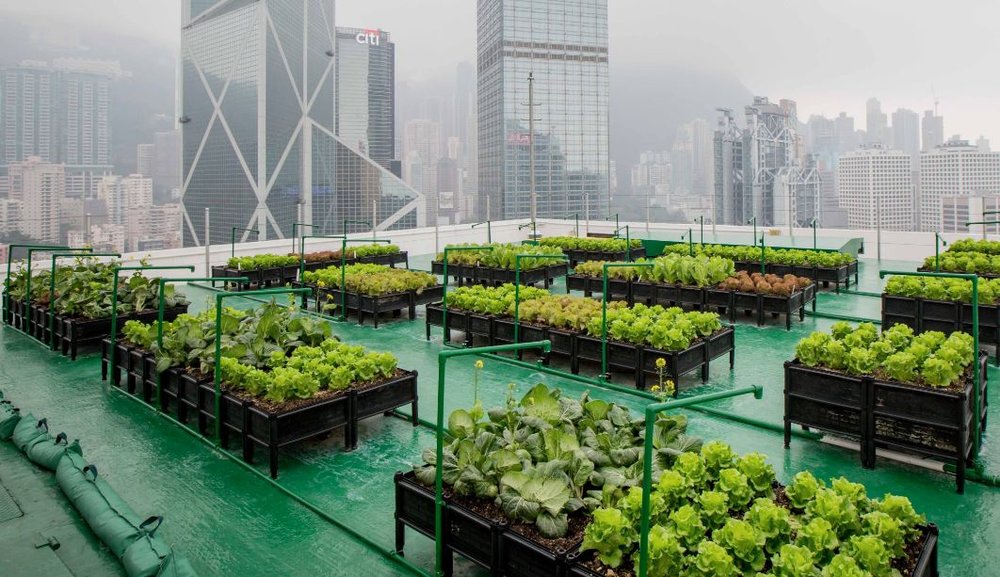Things about City Blooming
Table of ContentsRumored Buzz on City Blooming8 Simple Techniques For City BloomingCity Blooming Fundamentals ExplainedThe Main Principles Of City Blooming The Ultimate Guide To City Blooming
Fascinated in expanding food to buy in the City of Chicago? Thinking of starting an area yard? Modifications to the Chicago Zoning Ordinance enable farming uses like neighborhood yards and urban ranches in numerous parts of the city. Below is a checklist of often asked inquiries concerning the guidelines and policies that cultivators need to think about when intending a metropolitan farming job.
The zoning modification does not modify any kind of various other codes dealing with composting, building permits, acquiring or renting City owned building, business licenses or environmental contamination. There are existing codes that control these issues and they remain in full effect and may be applicable to your project. Area yards are usually owned or taken care of by public entities, public companies or community-based organizations and preserved by volunteers.
Urban ranches grow food that is meant to be marketed, either on a nonprofit or for-profit basis. Due to their industrial function, urban farms need a business license.
See This Report about City Blooming
Composting is enabled however only for plant material that is generated and used on site. The amount of compost product can not go beyond 25 cubic lawns at any provided time according to the requirements in 7-28-715 of the City's Municipal Code. Yes. Due to the fact that the dirt at many new garden websites needs changing, garden compost, soil, wood chips, or other materials can be acquired to construct or enhance the growing space - container and raised bed gardening etc..

If a building authorization is required then the hoophouse will certainly be thought about an accessory structure. You can figure out even more regarding the building license demands by speaking to the Division of Structures. The 25,000-square-foot dimension limitation is intended to stop a single community garden from dominating a provided block or interfering with the block's existing residential or commercial personality.
The limitation does not apply to yards found in Public Open Space (POS) areas. Can there be even more than one neighborhood yard that is 25,000 square feet on a solitary block? Yes. The dimension limit puts on private yards, not to individual blocks. No. Fencing is not called for, nonetheless, yards that have huge auto parking locations may be required to mount fencing or various other landscape design features.
Our City Blooming Ideas
B1 & B2 areas call for that all industrial use tasks be carried out inside. Is fencing required for urban farms? Fences may be required, along with landscape design and testing, for certain parking locations and outside work or storage areas depending on place and the details activity taking navigate here place.
Urban farms require building authorizations and zoning authorizations prior to building and construction (City gardening). Other kinds of city testimonial might be needed depending on certain frameworks, tasks, size, landscape design, licensing, public heath and stormwater monitoring issues.
The Department of Company Affairs and Consumer Defense can aid establish the certain kind of company license that's required. Off road auto parking is required for most commercial tasks in Chicago. The required number of car parking areas is based on the number of staff members working on site and not the square video footage of the growing room.
The smart Trick of City Blooming That Nobody is Discussing

An urban farm can market compost product generated on site, nonetheless, the procedure must abide with the guidelines in 7-28-715 of the Chicago Municipal Code. Aquaponic systems are allowed inside your home on city ranches in many zoning areas.
As much as five hives or swarms of honey bees might be kept as an accessory usage. Beekeepers need to sign up with the Illinois Division of Agriculture. For more details about the suggested zoning change you might get in touch with the Department of Real Estate and Economic Development, Bureau of Planning and Zoning at 312.744.8563.
Farming in cities and city locations An urban ranch in Chicago. Urban agriculture refers to different methods of cultivating. https://www.ted.com/profiles/47172561, processing, and dispersing food in city areas. The term also relates to the area activities of pet husbandry, aquaculture, beekeeping, and horticulture in an urban context. Urban farming is identified from peri-urban farming, which happens in backwoods beside residential areas.
Little Known Questions About City Blooming.
, who look for to develop social networks started on a shared values of nature and area holism. These networks can establish by way of official institutional assistance, becoming incorporated into regional community planning as a "transition town" movement for sustainable city development.
Some of the very first evidence of city agriculture comes from Mesopotamia.